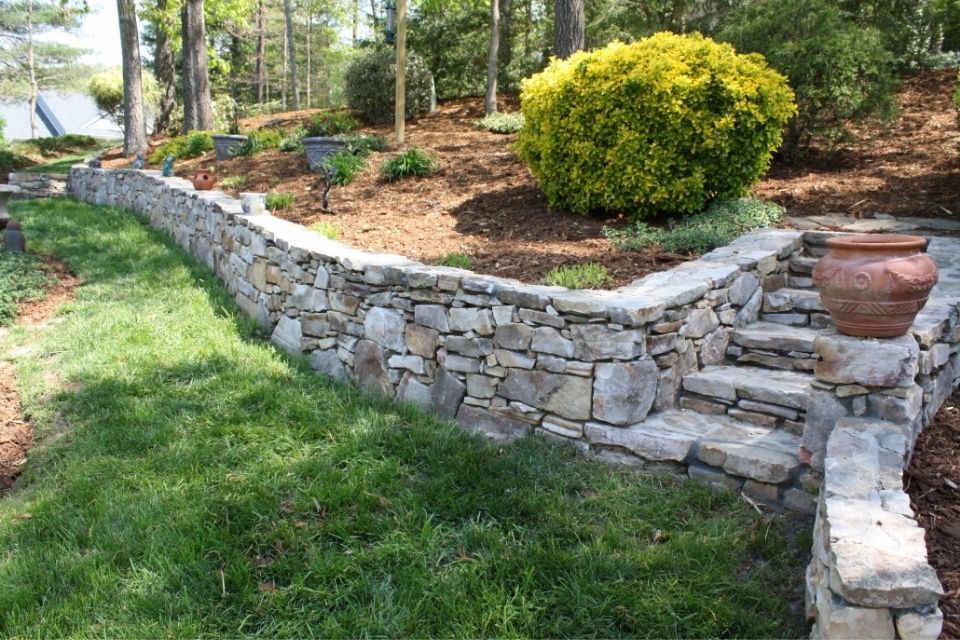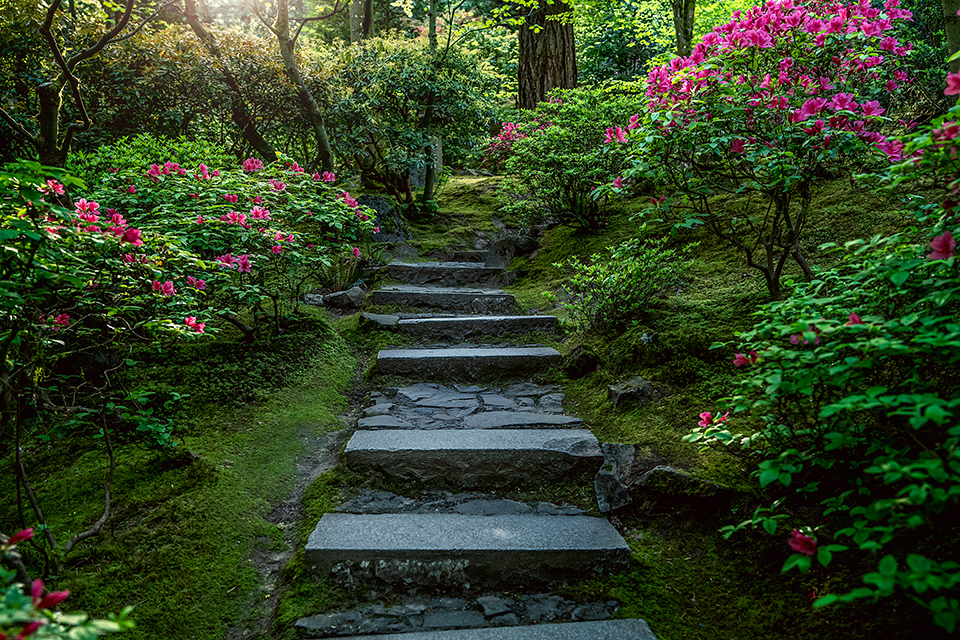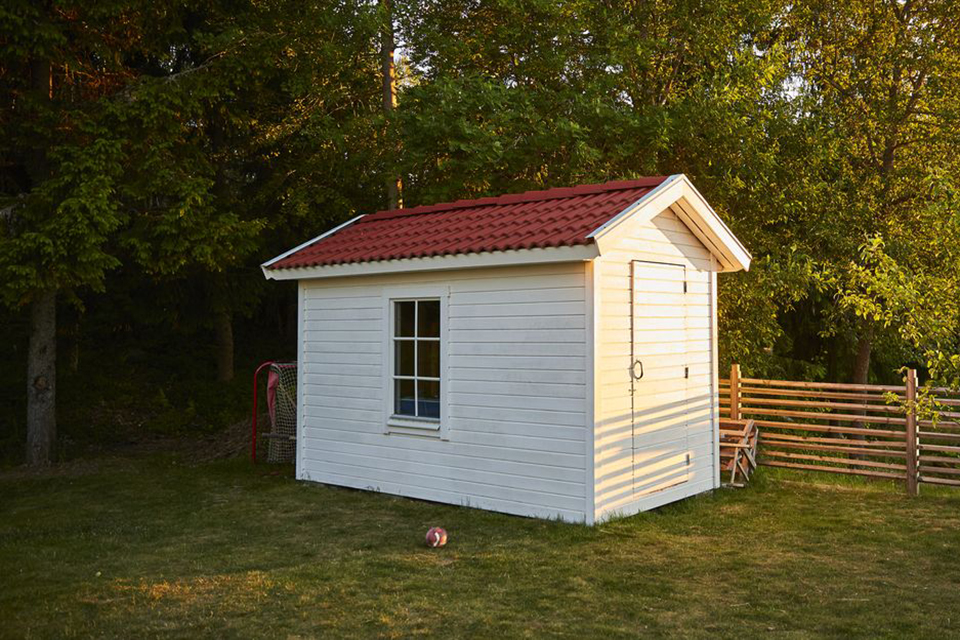Introduction to Garden Wall Ideas
Ah! The garden wall. Some may perceive it as the border from the outside world to protect your home, while others simply see it as a mixture of brick, sand and cement.
Whichever way you see your garden wall, I think we can all agree that having one is better than not having one.
Like everything, they come in all shapes and sizes, the size or shape should not limit you to having the best garden wall for your house.
What is a Garden Wall?
A garden wall is essentially a mixture of either brick, natural stone or altered stone bonded together to create one larger boundary for your land.
The garden wall usually ranged from 18-24 inches in height which runs along the end of a piece of land. Garden walls can enhance the appearance of the overall garden.
The right choice of brick or stone can create something quite magnificent in the garden that many people hold very close to their heart.
Garden lovers around the world take pride in ensuring their garden is in pristine condition. A garden wall can make their garden so much more than just some grass and flowerbeds.

A garden wall serves a purpose that is much more than meets the eye. At first sight, the wall is a nice feature that improves the look of the garden.
Beneath the aesthetic is protection that maintains the integrity of the garden that lays behind it.
There is a reason the same materials that make up a garden wall are used in constructing a house; this is because it offers protection, it offers a barrier from natures mischief, from wind to floods and mice to foxes; the wall creates a barrier that protects your favourite rose bush.
Now that we know what a garden wall does let's delve into the different wall type ideas and how they could create that next level garden experience.
Brick Garden Wall Ideas
We all know what brick is, the majority of properties are brick. It is strong, water-resistant, simple and clean. The best thing about brick garden walls is that you can create various shapes for your wall.
Brick is best for linear shapes if you like the idea of a nice, clean, elegant shaped wall that can be manipulated to create a unique design, then a brick wall is fantastic.
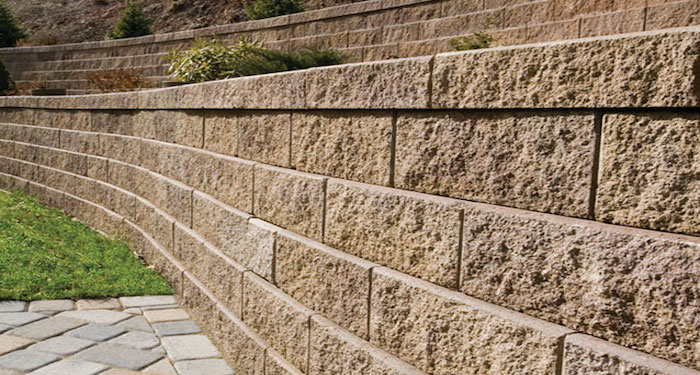
There is a very wide variety from minimalist to eccentric designs that can be created through using brick. Brick is very accessible, which makes it very common.
The brick wall gives a great sound barrier as well as protection from the wind. Depending on the size, a wall made from brick can range from around £550 to £1200 based on a small wall.
This depends on the type of brick being used. If using a machine-made brick, you can expect to spend between £530-£744 based on a 5x1.2m wall.
Stone Garden Wall Ideas
This is one for fans of rustic designs. Stone garden walls give a very nice vintage feel to a garden.
There are several different ways a stone wall can be installed. You have the option of pure stones placed on top of each other and then the wall being backfilled to secure it. This is the way that is preferred by many.

More work is required to get the shape you want as stones are not machine-made. This does give it a more rustic and authentic feel.
While not as secure as a brick wall, it is by no means a lesser wall type. The stone gives the garden a high level of protection and can be made to look more natural.
More colour options are available when using a natural stone wall, which gives this an edge over other walls. This does have a higher cost as this will cost around £75-£85 per square metre.
Concrete Block Wall Ideas
Concrete block walls are a nice hybrid, they take the style of the stone walls and then are mixed with the assembly process of a brick wall.
The concrete blocks are great for any style choice. You are catered for If you like a modern look or prefer a more vintage/rustic aesthetic.
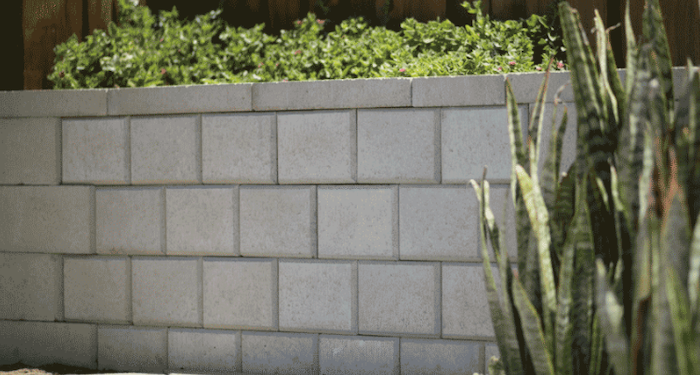
The concrete blocks offer a good level of security and protection. Similar to brick walls, the concrete blocks will act as a good barrier for the winds and rain that nature throws at them.
This is best for people who want a nice, elegant look but don't want to spend the top-end prices.
The concrete blocks can create a warm ambience in the garden, especially if accompanied by a fire pit. These walls usually cost between £9-£12 per square metre.
Cement Garden Wall Ideas
Well, we certainly are all a little guilty of going on to property websites and changing the max price to 20,000,000 and then filtering high to low from time to time.
What you will see there are some of the most luxurious and elegant features.
One of the features is the garden walls. The walls are smooth, straight and easy on the eye. These walls really give the look of class and modernism. The walls are made to the exact size and shape that you need.
The way the wall is assembled is by inserting the metalwork and woodwork to create the shape that you want, whether that is curved, straight, or anything else that you can think of, like the cement is then poured into the guide and then left to dry.
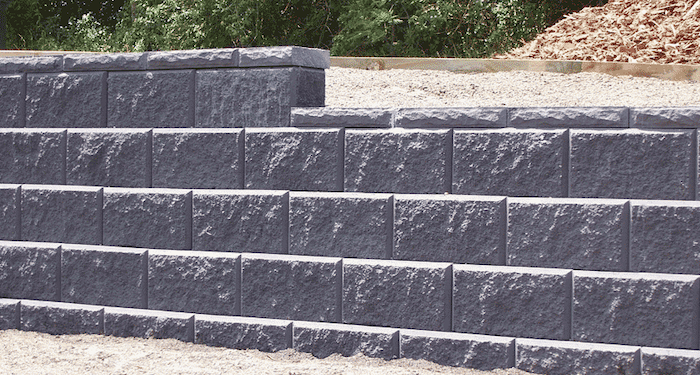
Concrete walls are very secure, as the wall is one material, and there are no weaker spots like there is with brick and stone as nothing needs to be bound together.
Mother nature will have a tough job of getting through to your beloved garden.
This also adds protection from any kind of trespassers as concrete is smooth, meaning it is very difficult to climb, so you can rest knowing you are safe and sound.
The price of this comes at around £30-£60 per square metre for a basic wall. This obviously may change depending on your area and the price a labourer would charge.
Wood Garden Wall Ideas
We all enjoy a holiday, we all enjoy the sun and the feeling of being somewhere exotic, it let sus unwind and relax, so why not have this every day? Why wait once or twice a year for this luxury.
A wooden garden wall gives you the exotic feel that we all crave, and by implementing this into your home, you can be transported to that special place.
One of the best things about a wooden wall is that it complements your garden's grass and concrete features.
With the correct lighting and flower feature, this can really transform your garden into a place of luxury and class.
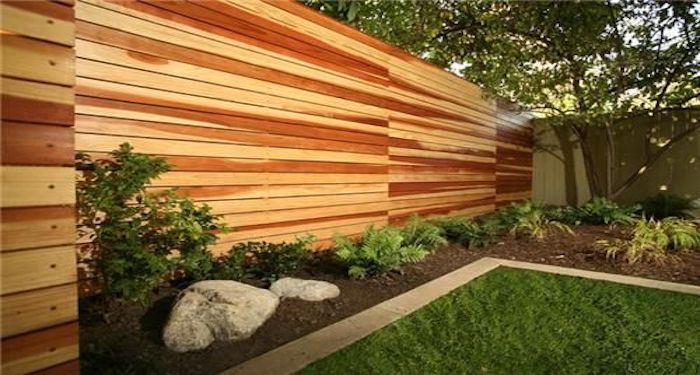
This is definitely on the cheaper side, coming in at around £10 per square metre. The main problem with this type of wall is upkeep.
If the wood is not properly primed and secured, then it can wilt and split when the wood gets wet, leaving it unsightly.
On the other hand, you can be very versatile when choosing the colour, although this can be changed as and when you want.
While not as secure as brick, it will still stand strong in the face of mother nature, it may not come out completely unscathed, but the foundation will still be standing strong.
To get the best from this type of wall, a bigger garden would be the best aesthetically.
Green Garden Wall
A green garden wall is not just purely aesthetic there is so much more under the surface. Now, these walls are fantastic to feel at one with nature.
The green garden wall is a regular structure that is intentionally covered by plant life.
Sometimes referred to as a living wall, this is often associated with ecosystem services.
The technology used to produce the green wall dates back as far as 1938 when Stanley Hart White patented a 'vegetation-bearing Architectonic structure and system'.
This was then popularized by Patrick Blanc, who put this patent into action with architect Adrien Fainsilber and engineer Peter Rice and created the very first indoor green wall at the Cité des Siences et de I'Industrie, Paris in 1986.
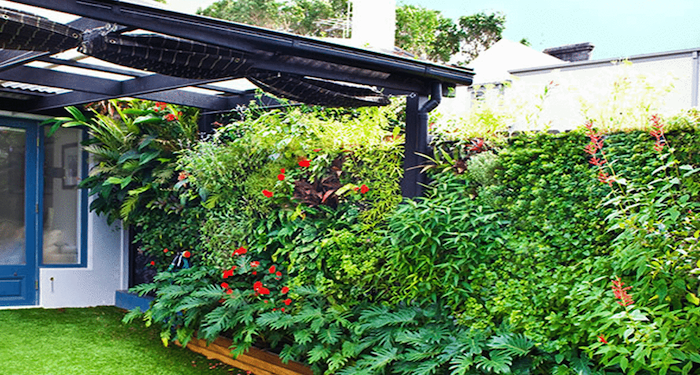
We have come a long way since then and now have the ability to have them at home. Green walls are mainly found in urban environments, helping to manage the heat caused by insolation in cities.
The economic advantages of these walls are better than any other wall in this article, the plants that grow on the wall do a very similar job to those on the floor, they purify the air, they absorb the carbon dioxide and produce oxygen, they can help in purifying polluted water they are overall very eco-friendly.
These walls give you a very relaxed vibe and are perfect for the warm summer nights in the garden with your nearest and dearest.
If you are on a budget, then this may be one that you have to avoid, as elegant and beautiful as they are, beauty does come at a cost.
So, what is the price of beauty? Well, between £75-£112 per square metre.
Curved Garden Walls
There is just something about a curved structure that draws our attention.
We live in a world where most things we see are squared or linear. Buildings are typically cubed, house plots are usually squared off, TV's are square, the majority of what we see is square. When we see a curve, it is different, it is sleek, it's mysterious.
Now let's think of curved structures in the context of garden walls. A curved wall is not made of any special material.
In fact, all the materials we have looked at in this article can be used to create a curved wall.
But what is the need for a curved wall?
Well, a curved wall is no different structurally than a straight wall, they keep the same level of protection from humans and wildlife.
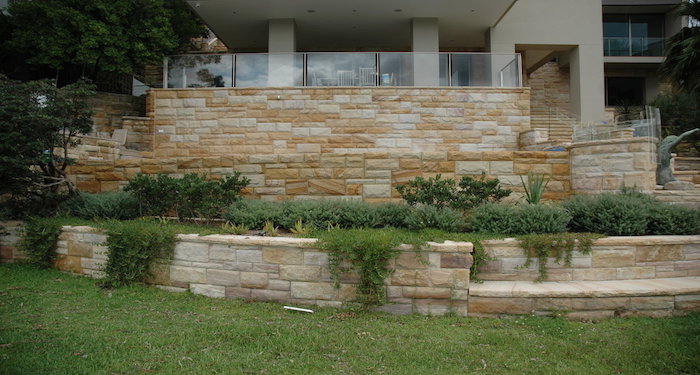
They also keep the sound to a minimum and still protect your plants from mother nature. The difference is the curved wall adds that little something different to our garden.
It is particularly advantageous if you have a house that may have been positioned so that you can't quite use all of the space when using a regular straight wall, the curved wall could be the option for you.
If given the same perimeter, a circle will always have an equal or larger surface area. Given this, finding a curved wall will give you more surface area in your garden.
So on top of this, giving you more space in your garden, you can also stand out and have something unique and eye-catching.
The materials, as we have stated, are the same. The cost, however, is different. Building a curved wall will cost you more than a regular wall as the design in more intricate, and the labourer will need to put more work into making the wall.
Retaining Wall Ideas
Retaining walls are usually that of the rigid type. The main use for retaining walls is to support soil laterally.
We all know that if we were to stand on a slope and drop soil, you would expect the soil to run down the slope until the end, now when the wall acts as that end. The wall stops the soil and foliage from running any further.
They are most commonly used when two different elevation levels need to be kept separate. A retaining wall is made in a very specific way to make sure it can withhold the pressure that is put onto it.
A base slab is placed under the ground level. The wall itself or the stem of the wall is then made with a key that fits into the base slab to help secure it, completing the foundation for the wall.
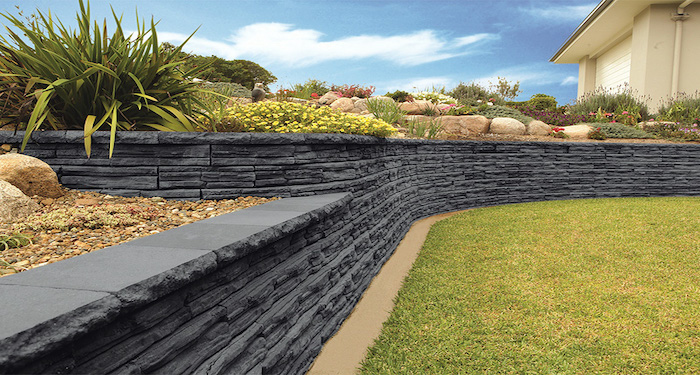
A drainage system is then installed behind the stem and just above the base to avoid any pressure coming from the water underneath the ground level.
Midway up the stem above ground level, a construction joint brings everything together and then will finish at the higher ground level.
Depending on the terrain, the wall needs to retain depends on the techniques used. For example, if the soil on the higher ground slopes, then a technique called soil nailing is required, which requires steel reinforced bars in the wall.
Retaining walls can be used in homes. After all, if you have a garden with two terrains you want to keep separate, there is no better way.
Concrete would be the most secure option, but if you have very light soil and no real pressure, you can use other materials.
Wood is sometimes used and can give a very elegant and fancy look. This is especially aesthetically pleasing when you have a raised surface like a decking area with features around it. Depending on the materials used, you can expect to pay around £9-£13.
Garden Wall Lighting Ideas
So, the wall is built, and you are happy with it, but something is still missing. Is it the Wood stain? Is it the wall plants? It more than likely is the lights.
There is a reason every photographer, model, influencer etc., talks about lighting. Lighting can make something that is regularly boring into an exciting highlight.
Think about your favourite hotel, chances are the lighting is eye-catching. The good thing about lighting is that no matter what your preference, there is something for everyone. Solar lights have taken the world by storm, no batteries or external wiring required.
The lights come in many different forms, LED strip lights which give you a nice beam of light that stretches across the size of the strip.
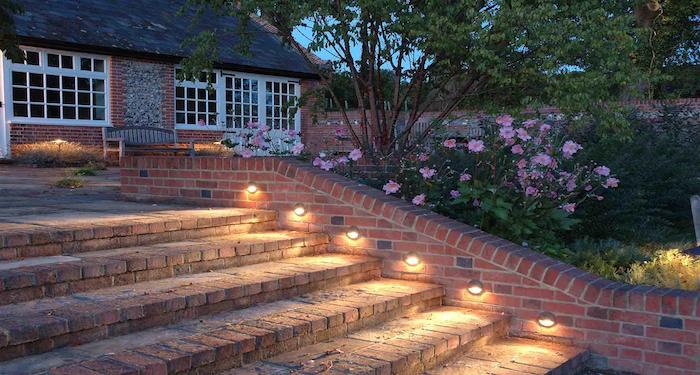
We then have the ground light. This gives a really nice singular beam of light pointing upwards on the wall, which is very similar to what you would see at a restaurant or hotel.
A light that has become increasingly popular lately is the up and downlight. This gives a light that beams out both the top and bottom leaving a vertical line on the wall, which gives a very classy effect.
The prices differ depending on the light you decide on. Even when you pick the light that you want, there will be budget options. It is important to remember you get what you pay for, so be mindful of that.
Overall, the lights will add that elegance that may be missing and add that finishing touch to your new wall.

